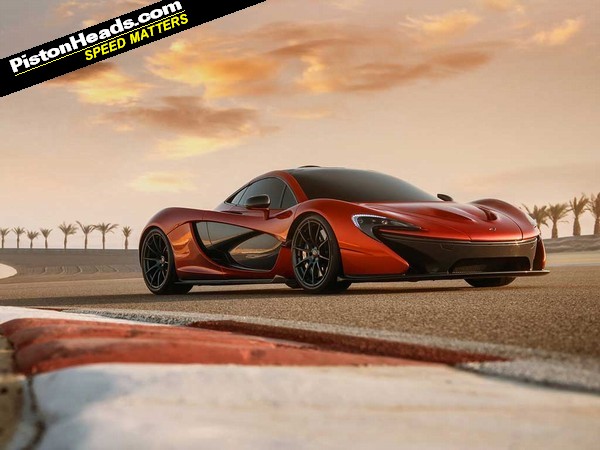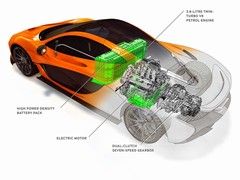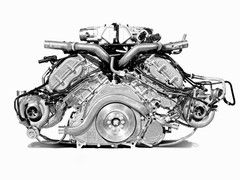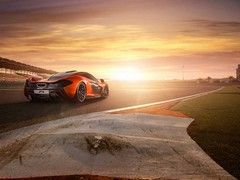McLaren P1: powertrain
916hp, DRS and electric 'push to pass' 179hp Instant Power Assist System confirmed in latest release

And if, like us, you're thinking back to the days of yellowing posters of Countachs on your wall and trying to imagine what a car with more than 400hp must be like, get ready for some fairly serious mental recalibration of what counts as fast. Because compared with the P1 even iconic supercar heroes like the Ferrari F40 or McLaren F1 seem about as sophisticated as a Model T.
The basics of the P1 powertrain are an upgraded version of McLaren's 3.8-litre twin-turbo V8, now delivering 737hp and 530lb ft compared with the 626hp and 442lb ft in the 12C. Cooling and 'durability' have been uprated to cope but the really big deal is the addition of an electric motor, incorporated directly into the engine block casting. This delivers 179hp and 192lb ft on its own, enough to enable the P1 to glide around city centres in eery silence for up to six or so miles, should you so wish. Things get a bit noisier once you exhaust the battery and the V8 fires up again but it helps contribute to the equally extraordinary 200g/km CO2 figure. The battery can be revived from flat in two hours from a plug-in charger stored in the luggage compartment and/or installed in your garage (home or pit). Cool stuff includes using the torque of the electric motor to help brake the petrol engine's revs, meaning even faster upshifts from the seven-speed dual-clutch gearbox.
Still taking all that in? Well, the tech onslaught continues because having created all that power McLaren's gone to some lengths to control how it's deployed. And it seems the electric motor has been tuned to fill in any gaps in the V8's power delivery, boosting low-end response before the turbos spool up to replicate the kind of instant kick in the back you'd get from a highly tuned normally aspirated engine. Like you had in the F1. Meanwhile the "significantly enhanced air charging system", aka a roof scoop, frees up more top end power than you'd normally associate with forced induction. Like a highly tuned normally aspirated engine. Like you had in the F1.
This and the 96kg weight penalty of the battery pack make you wonder just how things have progressed since that car. Sure, it's faster, more powerful and technically impressive. But it seems an awful lot of effort to effectively reach the same end. No matter - it's the way the market is going and with Ferrari and Porsche also preparing hybrid hypercars McLaren has to keep pace, technologically and on the track.
Speaking of which there are a couple of F1-influenced gadgets controlled by buttons on the steering wheel to complete that sense of technology transfer. The first is a DRS button, reducing the rear wing's drag by nearly a quarter for increased top speed. And the second is an IPAS (Instant Power Assist System) that lets you manually deploy the electric motor's 179hp at the moment of your choosing.
So the car can do it. Question is, can you? And will the next generation of hypercar drivers need F1 driver levels of fitness and reaction times to really exploit what they have at their disposal? We'll find out soon enough.
Gassing Station | General Gassing | Top of Page | What's New | My Stuff






